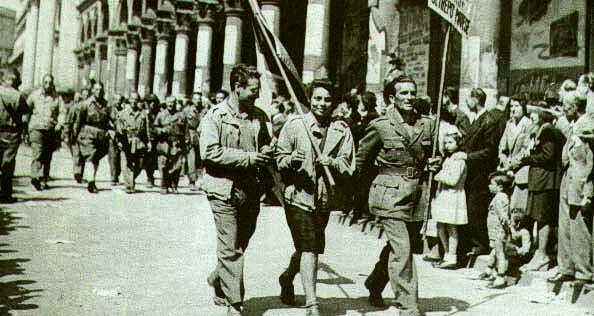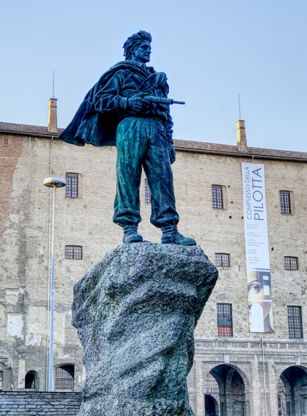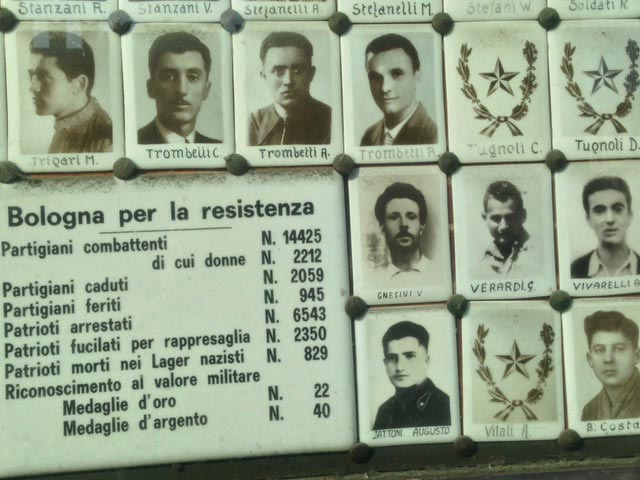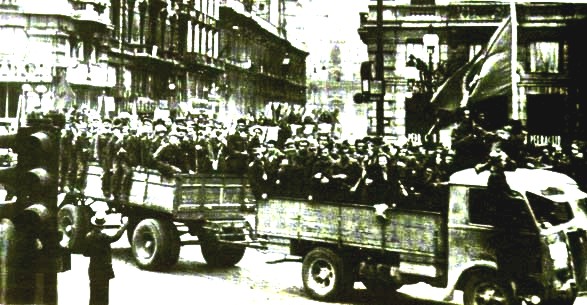
Bologna, Italy, 1944, and the streets are crawling with German soldiers. Nineteen-year-old Leila Venturi is shocked into joining the Resistance after her beloved best friend Rebecca, the daughter of a prominent Jewish businessman, is ruthlessly deported to a concentration camp.
In February 1981, exchange student Rhiannon Hughes arrives in Bologna to study at the university. There, she rents a room from Leila, who is now middle-aged and infirm. Leila’s nephew, Gianluca, offers to show Rhiannon around but Leila warns her off him.
Soon Rhiannon finds herself being drawn into a web of intrigue. What is Gianluca’s interest in a far-right group? And how is the nefarious head of this group connected to Leila? As dark secrets emerge from the past, Rhiannon is faced with a terrible choice. Will she take her courage into both hands and risk everything?

The Italian Resistance movement
The dramatic political and military changes in Italy during the second half of 1943 after the armistice with the Allies created a deep division in Italian society. Some chose to accept the German occupation and the return of fascism, others chose to reject it. The consequent clandestine struggle of the Resistance was one of the most heroic episodes of the Second World War, a history full of fascinating characters and heart-stirring events, which I have found an inspiration for my writing.

I am a British expat living in Italy. Wherever I go, I am reminded of the Resistance movement of 1943-45. Many main squares or streets bear the name “25 aprile”—the day in 1945 when Italy finally liberated itself from the occupation and returned to democracy. It is now a national holiday and I have been touched by the sight of city, town and village squares and streets named after the many martyrs for the cause.

The Italian Resistance movement went through all the classic stages of development—from passive acts to underground newspapers, escape lines, intelligence, sabotage, assassinations, guerrilla warfare, and, finally, a secret army. The first partisan bands emerged spontaneously in the mountains, and they were mainly composed of traditional anti-Fascists, disbanded Italian soldiers, and escaped Allied prisoners of war. My two previous books, “The Girl from Venice” and “The Girl from Portofino” are set in the mountains of the Veneto and the area behind Genoa. The heroine of my book, “The Girl from Bologna”, is a nineteen-year-old student in 1943, who joins the Resistance after her best friend, who is Jewish, is imprisoned and then deported to Auschwitz. She fights with the urban guerrillas who grouped in the city when it appeared that the Allies were on the cusp of breaking through German lines in the autumn of 1944. They were caught like sitting ducks when the Anglo-Americans halted their advance. Making my characters go through the terrible repercussions brought tears to my eyes. The actions perpetrated by the fascists against the partisans were so violent, they even sickened the German command.

Outside Italy most people are unaware of the scale of resistance to Italian fascists and the Nazi occupation. Yet writing in May 1944, Allied commander-in-chief General Alexander calculated those partisan activities in the occupied north had succeeded in pinning down 6 out of every 25 enemy divisions. The resistance forces were so powerful that the Germans had to employ mechanised troops against them. In fact, the Allies relied on the Resistance as part of their Italian campaign and, if the partisans hadn’t been as powerful in engaging the Germans, four extra enemy divisions might have become available for employment on the front against the Allied Armies. After the war, the British Hewitt Report concluded that ‘without these partisan victories there would have been no Allied victory in Italy so swift, so overwhelming or so inexpensive.’

Available on #KindleUnlimited
Amazon UK: https://www.amazon.co.uk/dp/B09NTXCHKG
Amazon US: https://www.amazon.com/dp/B09NTXCHKG
Amazon CA: https://www.amazon.ca/dp/B09NTXCHKG
Amazon AU: https://www.amazon.com.au/dp/B09NTXCHKG
Meet Siobhan Daiko

Siobhan Daiko is a British historical fiction author. A lover of all things Italian, she lives in the Veneto region of northern Italy with her husband, a Havanese dog and two rescued cats. After a life of romance and adventure in Hong Kong, Australia and the UK, Siobhan now spends her time, when she isn’t writing, enjoying her life near Venice.
Connect with Siobhan
Website: https://siobhandaiko.org
Twitter: https://twitter.com/siobhandaiko
Facebook: https://www.facebook.com/AsolandoBooks
LinkedIn: https://www.linkedin.com/in/siobhan-daiko-74993651/
Instagram: https://www.instagram.com/siobhandaiko_asolandobooks/
Pinterest: https://www.pinterest.it/SiobhanDaiko/_saved/
Book Bub: https://www.bookbub.com/authors/siobhan-daiko
Amazon Author Page: author.to/SiobhanDaiko
Goodreads: https://www.goodreads.com/author/show/7091256.Siobhan_Daiko
Thank you so much for hosting the blog tour for The Girl from Bologna.
All the best,
Mary Anne
The Coffee Pot Book Club